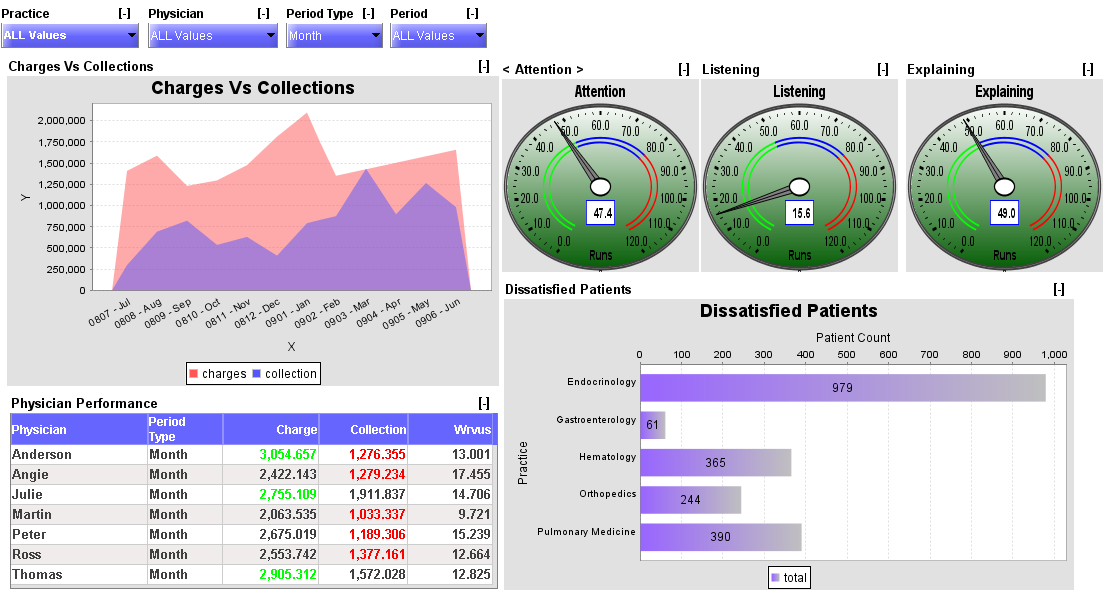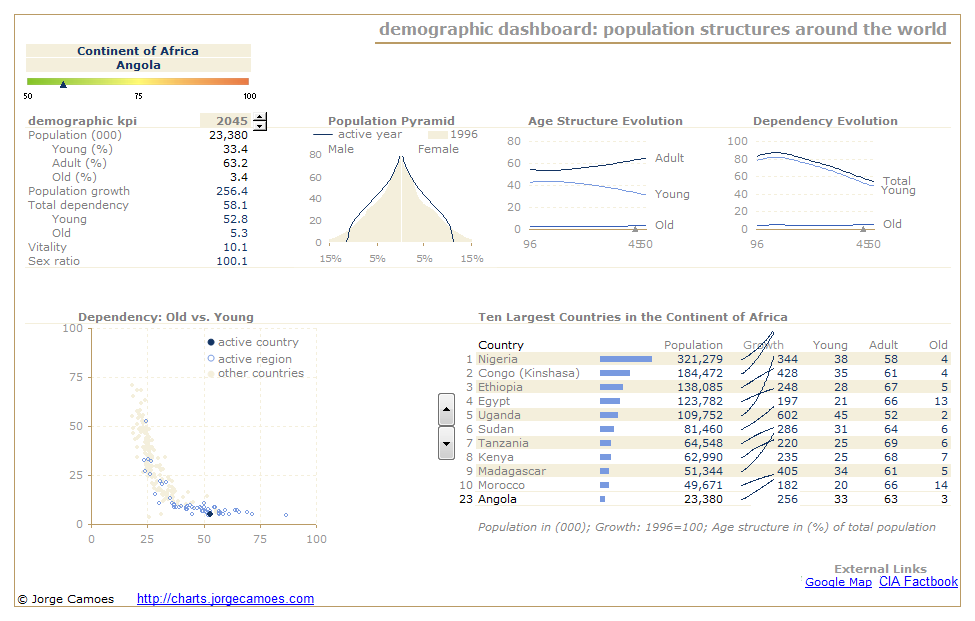Dashboards often provide at-a-glance views of KPIs (key performance indicators) relevant to a particular objective or business process (e.g. sales, marketing, human resources, or production). The term dashboard originates from the automobile dashboard where drivers monitor the major functions at a glance via the instrument cluster. Dashboards give signs about a business letting the user know something is wrong or something is right. The corporate world has tried for years to come up with a solution that would tell them if their business needed maintenance or if the temperature of their business was running above normal. Dashboards typically are limited to show summaries, key trends, comparisons, and exceptions. There are four Key elements to a good dashboard:.
- Simple, communicates easily
- Minimum distractions...it could cause confusion
- Supports organized business with meaning and useful data
- Applies human visual perception to visual presentation of information
In management information systems, a dashboard is
"An easy to read, often single page, real-time user interface, showing a graphical presentation of the current status (snapshot) and historical trends of an organization's key performance indicators (KPIs) to enable instantaneous and informed decisions to be made at a glance."

History
Early predecessors of the modern business dashboard were first developed in the 1980s in the form of Executive Information Systems (EISs). Due to problems primarily with data refreshing and handling, it was soon realized that the approach wasn't practical as information was often incomplete, unreliable, and spread across too many disparate sources. Thus, EISs hibernated until the 1990s when the information age quickened pace and data warehousing, and online analytical processing (OLAP) allowed dashboards to function adequately. Despite the availability of enabling technologies, the dashboard use didn't become popular until later in that decade, with the rise of key performance indicators (KPIs), and the introduction of Robert S. Kaplan and David P. Norton's Balanced Scorecard. Today, the use of dashboards forms an important part of Business Performance Management (BPM).
Building Dashboards In Excel Video
Classification
Dashboards can be broken down according to role and are either strategic, analytical, operational, or informational. Strategic dashboards support managers at any level in an organization, and provide the quick overview that decision makers need to monitor the health and opportunities of the business. Dashboards of this type focus on high level measures of performance, and forecasts. Strategic dashboards benefit from static snapshots of data (daily, weekly, monthly, and quarterly) that are not constantly changing from one moment to the next. Dashboards for analytical purposes often include more context, comparisons, and history, along with subtler performance evaluators. Analytical dashboards typically support interactions with the data, such as drilling down into the underlying details. Dashboards for monitoring operations are often designed differently from those that support strategic decision making or data analysis and often require monitoring of activities and events that are constantly changing and might require attention and response at a moment's notice.

Dashboards and scoreboards
Balanced Scoreboards and Dashboards have been linked together as if they were interchangeable. However, although both visually display critical information, the difference is in the format: Scoreboards can open the quality of an operation while dashboards provide calculated direction. A balanced scoreboard has what they called a "prescriptive" format. It should always contain these components (Active Strategy)...
- Perspectives - groupings of high level strategic areas
- Objectives - verb-noun phrases pulled from a strategy plan
- Measures - also called Metric or Key Performance Indicators (KPIs)
- Spotlight Indicators - red, yellow, or green symbols that provide an at-a-glance view of a measure's performance.
Each of these sections ensures that a Balanced Scorecard is essentially connected to the businesses critical strategic needs.
The design of a dashboard is more loosely defined. Dashboards are usually a series of graphics, charts, gauges and other visual indicators that can be monitored and interpreted. Even when there is a strategic link, on a dashboard, it may not be noticed as such since objectives are not normally present on dashboards. However, dashboards can be customized to link their graphs and charts to strategic objectives.

Design
Dashboards are unique. The design of each dashboard is driven by the business and its needs and culture. What may work for one business may not work for another. There are general guidelines that are available when initially developing the tool or when looking to improve current performance metrics.
Planning and researching a good design is crucial for dashboards. A good information design will clearly communicate key information to users and makes supporting information easily accessible. Setting up a business dashboard can also be fun and worthwhile if done correctly.
Are You Looking for Products
Here some products related to "Dashboard (business)".
Mastering Excel: Building..
Mastering Excel: Dashboar..
Mastering Excel: User For..
Mastering Excel: SUMPRODU..
Get these at Amazon.com* amzn.to is official short URL for Amazon.com, provided by Bitly
Source of the article : here






EmoticonEmoticon